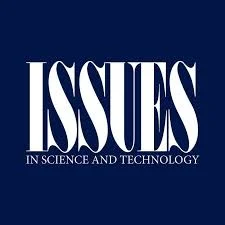Publications
Expert assessments of strategies to enhance global nuclear security
Abstract
Historically, the U.S. has sought to use commercial trade in nuclear technologies to influence international nuclear security standards and promote nonproliferation. Concern has grown that, with a stagnating domestic nuclear industry and declining export industry, the U.S. will lose a significant tool of foreign policy and leverage in maintaining strong international standards. While the issue has been discussed extensively in the policy community and used as a powerful rhetorical tool to motivate tangentially related policies such as subsidizing existing U.S. nuclear plants, no one has systematically assessed the issue, structured the problem and proposed and evaluated potential solutions. Here we briefly analyze the current international state of play, and then outline a set of specific strategies the U.S. might adopt on its own, or promote internationally, to retain its influence. Building on the literature, nuclear security and nuclear power experts assisted us in framing the issues and then, in a participatory workshop, helped us to assess and refine possible strategies. While not all experts agreed that U.S. influence has already declined, most indicated that it likely would decline in the future if present domestic and international trends continue. Although none of the proposed strategies that we advanced or that the experts suggested are likely to be effective in the short term, several warrant ongoing refinements and, if they can be implemented, might have beneficial impacts in coming decades.
Historical construction costs of global nuclear power reactors
Abstract
The existing literature on the construction costs of nuclear power reactors has focused almost exclusively on trends in construction costs in only two countries, the United States and France, and during two decades, the 1970s and 1980s. These analyses, Koomey and Hultman (2007); Grubler (2010), and Escobar-Rangel and Lévêque (2015), study only 26% of reactors built globally between 1960 and 2010, providing an incomplete picture of the economic evolution of nuclear power construction. This study curates historical reactor-specific overnight construction cost (OCC) data that broaden the scope of study substantially, covering the full cost history for 349 reactors in the US, France, Canada, West Germany, Japan, India, and South Korea, encompassing 58% of all reactors built globally. We find that trends in costs have varied significantly in magnitude and in structure by era, country, and experience. In contrast to the rapid cost escalation that characterized nuclear construction in the United States, we find evidence of much milder cost escalation in many countries, including absolute cost declines in some countries and specific eras. Our new findings suggest that there is no inherent cost escalation trend associated with nuclear technology.
“Why the United States Should Partner With Africa to Deploy Advanced Reactors” in Issues in Science & Technology
Africa has nuclear power in its future. Interest in nuclear energy technologies among African nations is considerable and growing. Of the 30 countries identified by the International Atomic Energy Agency (IAEA) as interested in nuclear power programs, one-third are in Africa. Although the first commercial nuclear plant in these countries may be decades away, now is the time for potential international partners to start taking Africa’s nuclear power ambitions seriously.
How to Make Nuclear Innovative
This report draws on lessons from some of the most innovative industries in today’s economy. The recent successes of these sectors—wide-body aircraft, pharmaceuticals, commercial spaceflight, and unconventional gas exploration—indicate that a networked, bottom-up, privately led model would propel innovation and commercialization in the nuclear industry, allowing it to tap into the vast potential of the start-ups, national laboratories, universities, and venture capital that underpin innovation in the United States.



